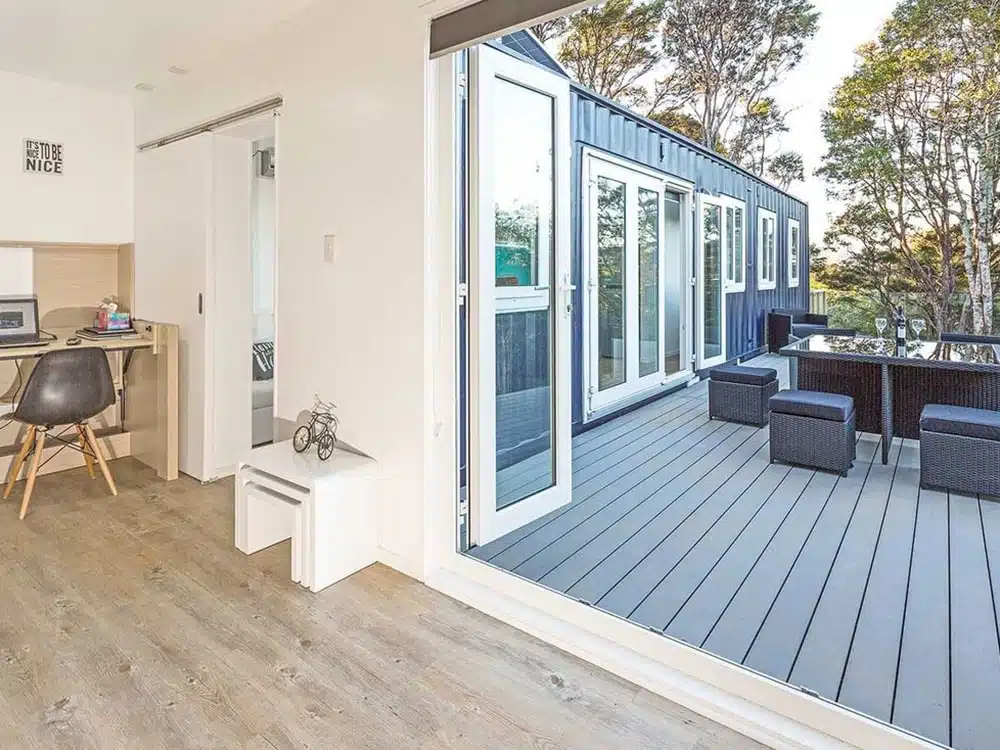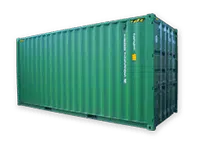There are many reasons why Australians opt for buying shipping container homes. Low cost and fast build, in comparison to conventional housing construction techniques, are two of the most common motivations stated by buyers. But what are the realities behind the recent shipping container architecture hype? Is it an investment worth considering, especially for young people stepping onto the housing ladder for the first time, or is ‘cargotecture’ just a passing fad?
Durable and Flexible Housing Solutions Using Conex Boxes
It stands to reason that corrugated Corten steel boxes designed to withstand ocean waves and storm-force winds, can pretty much take anything our Australian weather systems can throw at them. With regular maintenance, including painting and lubrication, they can expect a working life at sea in excess of 25-years.

The fact that so many containers remain serviceable long after that period and go on to second careers as trendy housing solutions, shows just how tough and resilient these boxes are. Ergo, they’re likely to make excellent starter homes that will last at least a decade but probably far longer.
If your building plot is large enough in area, you can simply build upwards and outwards as you grow older and your income, with any luck, grows alongside. There are plenty of shipping container conversion companies out there, who will future-proof your home for such eventualities. But nobody who knows how to modify a shipping container quite like Port!
While Shipping Containers are Cheap, Fitting Them Out May Not Be
There is a glut of recycled shipping containers on the market, including insulated models that will provide better protection from the elements and help maintain an even temperature. Prices are low. However, don’t be fooled into thinking that it will be just as cheap to kit your new home out, because it will need all the fixtures and fittings found in a regular home. That means full electrical wiring, plumbing, central-heating and aircon. Obviously, nearly all modern houses and apartments already possess these basics, so make sure you budget carefully for the extra costs.
On the upside, insulated shipping container homes are generally cheaper to heat, particularly if they have been designed from the start to be green and sustainable. For example, high-performance, polyurethane foam insulation does a great job of maintaining internal temperatures. Solar panels are also a great idea. But don’t forget, your new home must conform to local building codes, just like normal houses. Fortunately, shipping containers don’t need deep foundations, so you will save money there, but they must be level.
Getting the Interior Design Right
If you don’t initially have the funds to remove walls and ceilings to create a multi-storey shipping container mansion, you need to be aware of the space limitations. Standard intermodal boxes come in lengths up to 45-foot but they are relatively narrow at just 8-feet wide. It takes imagination and smart design to make the most of such a small interior. Clever use of windows and mirrors will help to impart a sense of space, as will choosing the right paint, floor coverings and furniture. Downsizing and decluttering will be the order of the day for most owners. And of course you’re not limited to just one container, because Port can connect as many as you require, adding doors, windows, air-conditioning, et al, as required in your plans.
If you have a spirit of adventure and are seeking a break from the norm, a home built from steel Conex box shipping containers will be a lot of fun, and certainly get your friends and neighbours talking.








